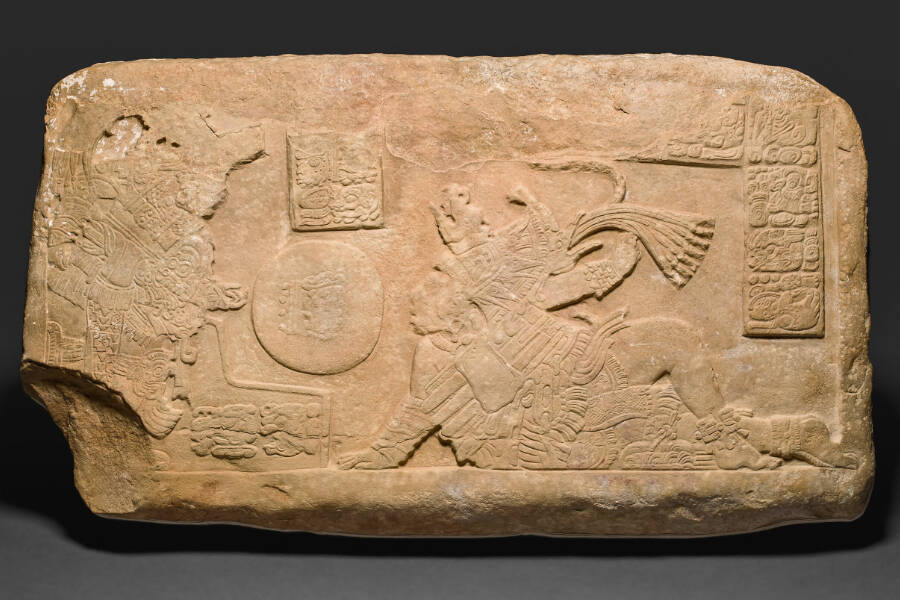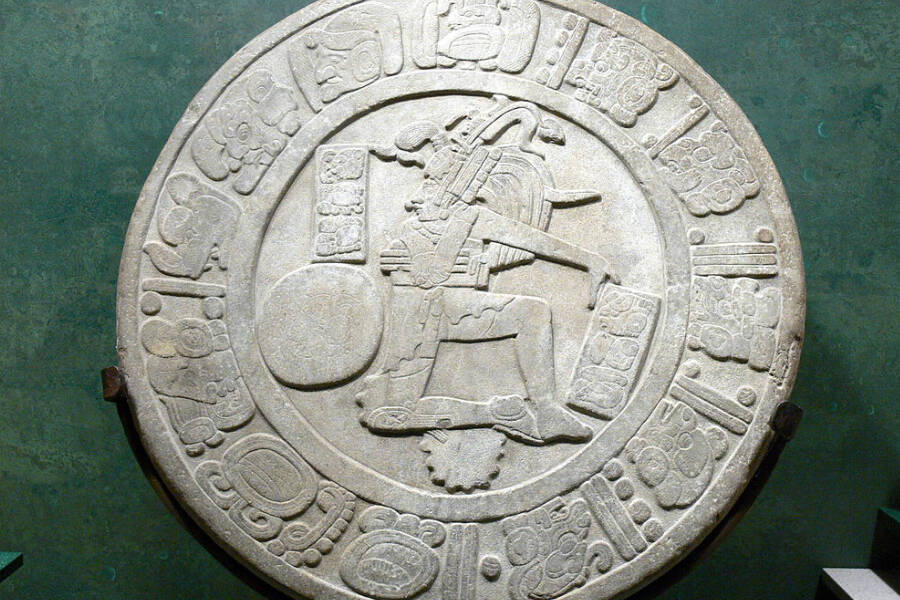The ancient game of pelota was a deeply meaningful tradition to Mesoamerican cultures and was intimately linked to life, death, and the gods.

Getty ImagesStone carvings depict pelota players using their hips to propel the heavy rubber balls.
Archaeologists studying the ruins of a Maya Sun Temple at the Toniná archaeological site in southern Mexico recently discovered 400 urns filled with a combination of human ashes, coal, rubber, and plant roots in an underground crypt beneath the temple.
The discovery has led to a theory that adds a fascinating twist to our understanding of the culture’s burial rites: Important Maya rulers may have been incinerated and had their ashes turned into rubber balls for sport.
As the BBC reported, archaeologist Juan Yadeun Angulo came up with this theory after reviewing stone carvings at key locations throughout a sunken ball court — one of the constructions still preserved to this day.
The court would have been used to play the game of pelota, a team sport played in Mesoamerica thousands of years ago.
The stone carvings, Angulo said, depict three rulers who died between 722 and 776 C.E. and were then taken to the “cave of the dead” for “transmutation.”
Angulo believes the underground crypt was used to burn the bodies in a religious ritual, after which the ashes were mixed with organic materials to make the large, heavy rubber balls used in pelota.
“We have evidence they were incorporated into balls. During the Classic Period, the balls were gigantic,” he said.
It’s likely that ancient Maya wanted their rulers’ bodies to “be converted into a life force, something to stimulate their people,” Angulo explained. “Just as Egyptians tried to preserve [bodies], we know here they were transformed in another way.”
Angulo has been working with Mexico’s National Institute of Anthropology and History to study the crypt, but evidence from another archaeological site in Chiapas sheds more light on just how large the pelota balls were.
The carved stone disc depicts the pelota ball as being almost the size of a human, showing a player propelling the ball with their hips.

Wolfgang Sauber/Imagining HistoryThe stone disk shows another depiction of the ancient ballgame.
According to The Metropolitan Museum of Art, depictions of the ancient ballgame often show players wearing layers of protective padding, particularly around the midsection, and also occasionally wearing kneepads and hand mitts.
While pelota was often played for entertainment and sport, researchers believe it may have held important symbolic and spiritual value to ancient Mesoamerican cultures. The ball’s movement across the court would have represented the movement of the sun across the sky.
In Maya regions, surviving texts have also indicated that the ballgame served as the setting for mythological battles between the forces of life and the forces of death. Paintings and stone carvings depict rulers dressed as gods, reenacting these mythological battles.
Courts, too, had symbolic importance to ancient cultures, often seen as a connection to the Underworld. Carved stone panels found at other sites like Chichén Itzá and El Tajín depict individuals being sacrificed and decapitated on a court.
One carving shows a player kneeling on the court, his head removed from his body, and serpents and vegetation sprouting from his neck. As described by The Met, this underlines “the regenerative, nourishing power of sacrificial blood.”
The significant connection between ballgames and sacrificial rituals can be found also in the Popol Vu , an ancient Ki’che Maya creation myth in which two brothers compete against the Lords of Xibalba — the Underworld — in a game of pelota.
The new discovery at the Toniná archaeological site now serves to offer deeper insight into the historical, spiritual, and anthropological significance of one of the world’s oldest games.
After learning about the ancient Maya ritual ballgame, read about the Maya palace with human remains inside that was uncovered in the Yucatàn jungle. Then, find out about the ancient hidden neighborhood of Tikal in Guatemala.





